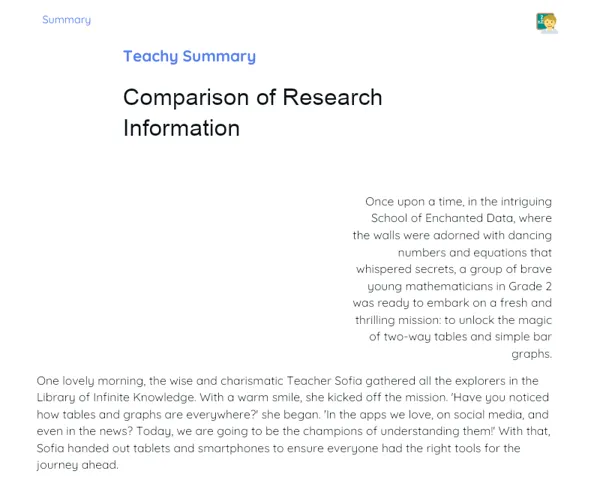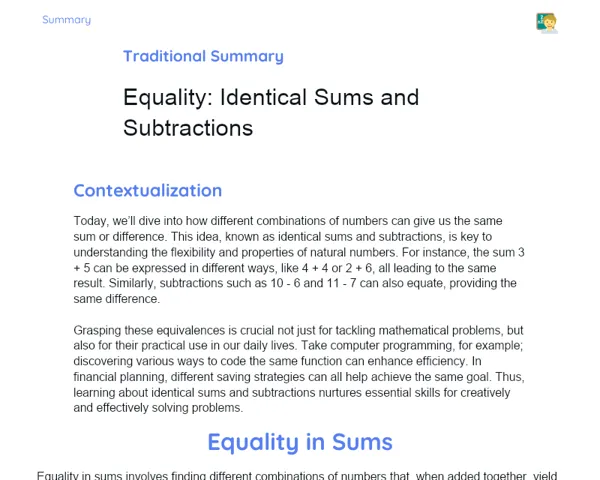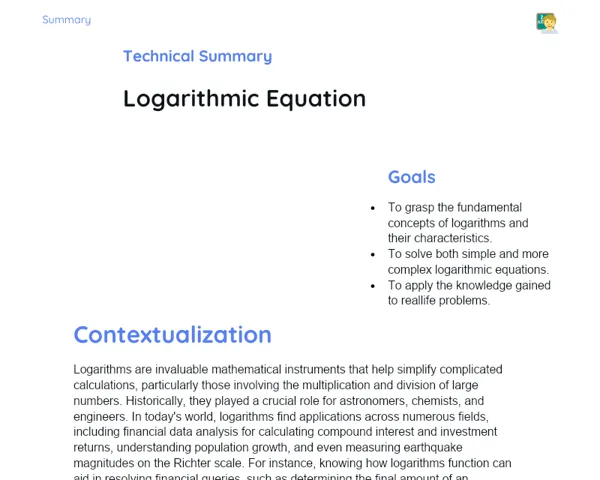Objectives
1. 📊 Grasp and apply the concept of simple interest, including how to calculate the total amount and interest rates.
2. 📊 Differentiate between simple interest and compound interest, and understand how they apply in real-life scenarios.
Contextualization
Did you know that simple interest is one of the most straightforward methods to calculate financial returns in various situations, like loans or investments? This concept is essential for understanding how different financial transactions operate in daily life. For instance, when borrowing money or putting cash into a project, simple interest helps in working out what you'll receive back or what you'll need to pay. Getting a good handle on this concept is not just vital for maths but also for making well-informed and effective financial choices.
Important Topics
Calculation of Total Amount
Understanding how to calculate the total amount in a simple interest framework is fundamental to seeing how your initial investment or capital grows over time. The total amount is essentially the sum of your initial capital plus the interest earned. You can use the formula M = C(1 + nt), where M is the total amount, C is your initial capital, n is the number of periods, and t is the interest rate per period.
-
The total amount increases steadily over time, which is different from compound interest where growth happens much faster.
-
Grasping how to work out the total amount is crucial for assessing investment returns or the costs associated with loans in everyday situations.
-
Being able to calculate the total amount helps in making financial decisions by allowing you to estimate how an amount might grow or shrink over time.
Interest Rate
In a simple interest system, the interest rate is applied directly to the initial capital. This rate remains consistent throughout the term of the investment or loan. The interest rate is key in calculating both the amount of interest and the total sum, and it directly influences the financial return or cost of borrowing.
-
With simple interest, the interest rate stays the same, which simplifies calculations and predictions regarding potential gains or costs.
-
Understanding the interest rate is essential for negotiating loans or investments, as it significantly affects the final sum involved.
-
Fluctuations in the interest rate can greatly impact both investments and debts, underscoring the need to keep an eye on market rates.
Difference Between Simple and Compound Interest
The main distinction between simple and compound interest is in how interest is calculated on the initial amount. Simple interest is based solely on the original amount, while compound interest takes into account both the original capital and the interest that has already been added. This is crucial to comprehend, as it greatly affects how much total wealth is accumulated over time.
-
Compound interest generally yields more than simple interest over time, thanks to the 'interest on interest' phenomenon.
-
Simple interest is straightforward to calculate and understand, making it beneficial when straightforwardness is more important than precision.
-
Knowing the differences between simple and compound interest is critical for selecting the most suitable type of investment or loan based on your financial needs and goals.
Key Terms
-
Simple Interest: A way to calculate interest where the rate applies only to the initial capital, without 'interest on interest'.
-
Total Amount: The sum of the original capital and the interest accumulated over time in a simple interest scenario.
-
Interest Rate: The percentage of capital that is used as interest over a specified time, remaining fixed in simple interest.
For Reflection
-
How might your choices between simple and compound interest affect your investment or loan decisions later on?
-
In what ways can being knowledgeable about interest calculations assist you in managing your personal finances?
-
What are the effects of a higher or lower interest rate on the final amount in a simple interest scenario?
Important Conclusions
-
In this lesson, we delved into the intriguing realm of simple interest, learning how to calculate the total amount and understand fixed interest rates, which are vital for making numerous financial decisions.
-
We highlighted how simple interest contrasts with compound interest and the significance of selecting the appropriate interest type for different financial circumstances.
-
We acknowledged the practical use of simple interest in contexts like loans, investments, and even managing small businesses, emphasizing the relevance of this knowledge in everyday situations.
To Exercise Knowledge
- Create an investment plan: Use a hypothetical amount and decide whether you'd invest using simple or compound interest. Work out the final amount for both options after 1 year. 2. Simulate a loan: Borrow a fictional amount from a family member or friend with a simple interest rate of your choosing. Calculate how much you'd need to repay after 6 months. 3. Compare and learn: Research a real investment that uses simple interest and another with compound interest. Calculate and compare the returns to see the difference.
Challenge
The Magic Interest Challenge: Start with an initial investment of R500 and select a simple interest rate of your choice to find out how much you’ll have after 5 years. Experiment with different rates to see how linear growth affects your total!
Study Tips
-
Practice consistently with simple interest problems to sharpen your understanding and speed.
-
Explore financial simulation apps that can help you visualize the effects of simple interest in various scenarios.
-
Share your experiences regarding loans or investments with family or friends and try applying your knowledge of simple interest to better grasp real-life situations.



